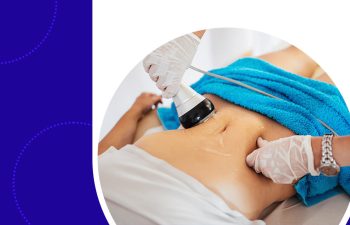Top 3 Myths About Liposuction Surgery

Liposuction is one of the most popular aesthetic medical procedures in the world, thanks to its ability to provide body contouring for those areas of the body that might be resistant to traditional diet or exercise.
As with most medical procedures, though, there are inevitably a number of common myths regarding liposuction that can mislead a curious public as to exactly what liposuction is and how it may (or may not) benefit them.
Here are some of the most common liposuction myths along with the accurate information to set the record straight.
Myth #1: Liposuction is a weight loss procedure
One very common misconception about liposuction is that it’s a magical, instant weight loss solution for those who are significantly overweight.
While liposuction can remove up to 11 pounds of fat from targeted areas, it is not intended as an overall weight loss solution. Instead, liposuction is intended as a body sculpting solution for those who are still slightly overweight despite diet and exercise. Liposuction targets only those small, stubborn pockets of fat that other weight loss methods just can’t seem to reach.
The simple fact is that, for those who have significant amounts of weight to lose, liposuction is not a viable solution.
Removal of more than ~5 liters (11 pounds) of fat at one time is not considered safe. Also, due to skin elasticity, removing large deposits of fat can often result in saggy or dimpled skin over the treatment area. Perhaps the most important thing a patient should know before committing to liposuction is the fact that there are two types of fat: subcutaneous fat and visceral fat.
Subcutaneous fat is the fat right beneath the skin and above the abdominal muscles. This is the fat that can be removed by liposuction (in reasonable amounts). If the problem is excess subcutaneous fat, liposuction can go a long way toward giving patients that flat stomach they’ve been working toward with diet and exercise.
Visceral fat, on the other hand, is the deeper fat deposited below the abdominal muscles, inside the abdominal cavity, and surrounding the internal organs. If a patient is dealing with an excess of visceral fat, diet and exercise are the best options. Liposuction will not be able to achieve the results a patient is hoping for.
Myth #2: Liposuction will tighten skin and “cure” cellulite
While liposuction can be highly effective at flattening and contouring a variety of non-responsive, isolated subcutaneous fat deposits, it’s important that patients not go into the procedure with unrealistic expectations.
Liposuction is not a skin treatment, and, in some cases, it can actually worsen the skin’s appearance in the treatment area.
If excess skin is a factor in the appearance a patient is hoping to change, liposuction alone can often leave behind saggy, dimpled excess skin, which can undermine the flattening and contouring benefits of the procedures. In these cases, patients should know that it’s best to combine liposuction with a skin-tightening procedure in order to most effectively achieve the desired results.
Likewise, cellulite is not just another pocket of wayward fat that can be eliminated by liposuction. Cellulite is a byproduct of subcutaneous fat, but its familiar appearance is the result of that fat pushing against the connective tissues that also lie just beneath the skin.
While liposuction will remove the subcutaneous fat, it cannot repair the stretched connective tissue that causes the appearance of cellulite.
As with any aesthetic procedure, it’s critical to provide patients with a detailed picture of the kind of results they can (and cannot) expect from liposuction, so that there are no post-procedure surprises.
Myth #3: Liposuction is the “easy way out”
As mentioned above, liposuction is not a magical weight loss alternative for those who just don’t feel like eating right or exercising. In fact, the best candidates for successful liposuction are those patients who have already achieved and are maintaining healthy body weight through diet and exercise.
The fact is that, even with the most dedicated diet and exercise regimen, there are often isolated pockets of fat deposits that just refuse to go away. These are the areas for which liposuction can be a good solution.
Liposuction does, however, require recovery time and post-surgical care. It’s also important to remember that, while initial post-procedure weight gain will generally be deposited mainly on untreated areas, continued significant weight gain can result in fat returning to treated areas. Patients should know that maintaining the benefits of liposuction will require a continued healthy diet, as well as a dedicated exercise routine.
The type of procedure each patient needs to achieve their desired outcome is dependent upon a wide variety of considerations. This is why it’s vital to offer a thorough consultation before deciding on a course of action to ensure that providers and patients are on the same page as to the goals of treatment and the results that can be expected.
Posted on behalf of
640 South San Vicente, Suite 410
Los Angeles, CA 90048
Phone: (310) 274-9955
info@aaams.net
Monday - Friday 9:00 AM – 5:00 PM
